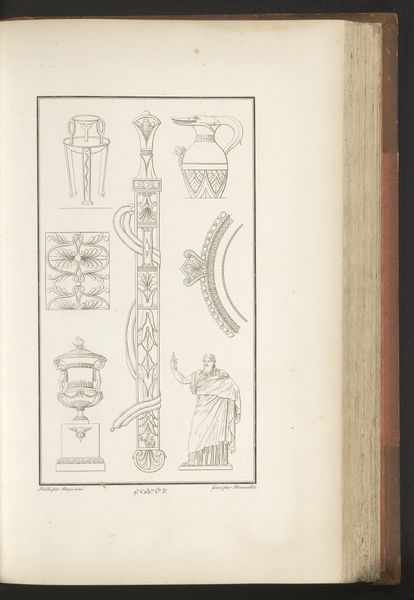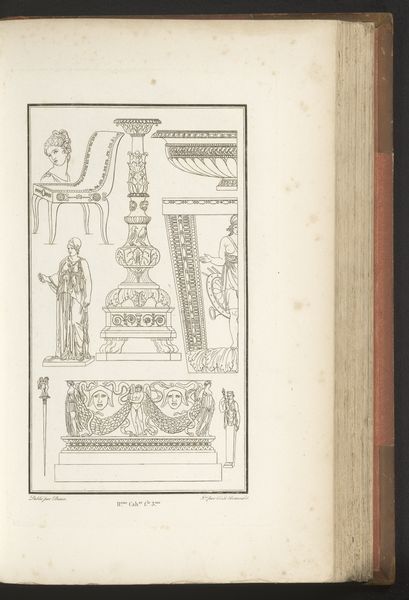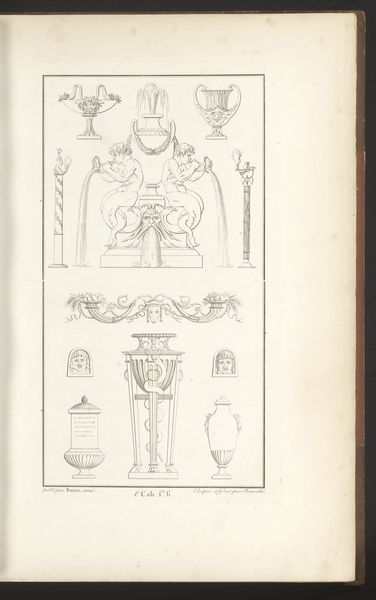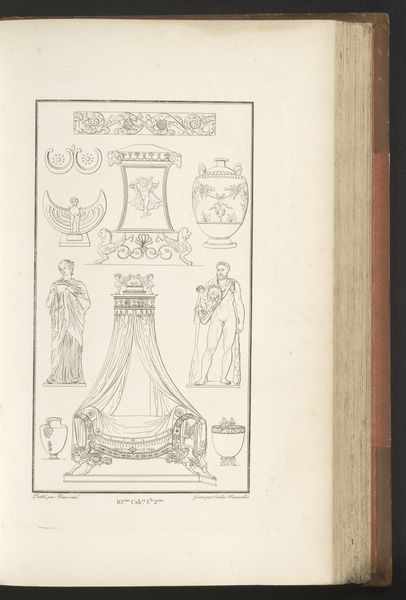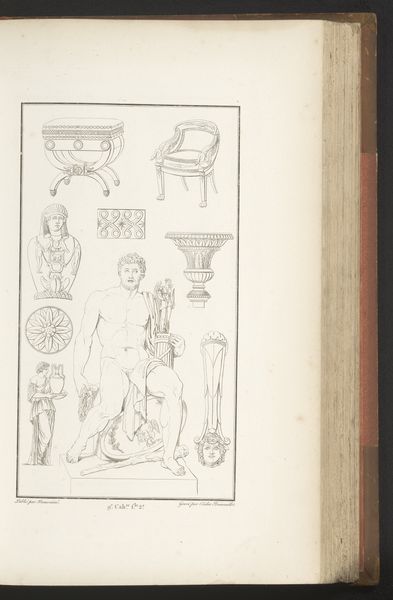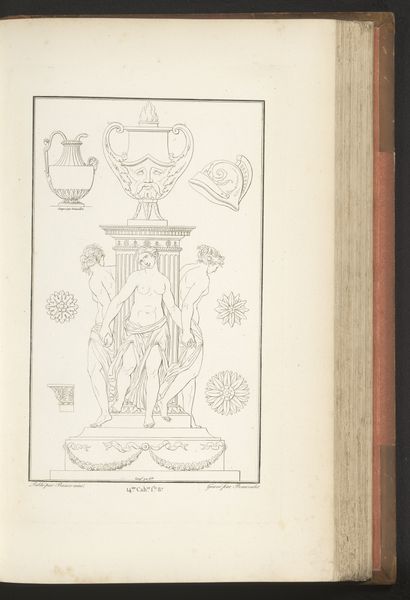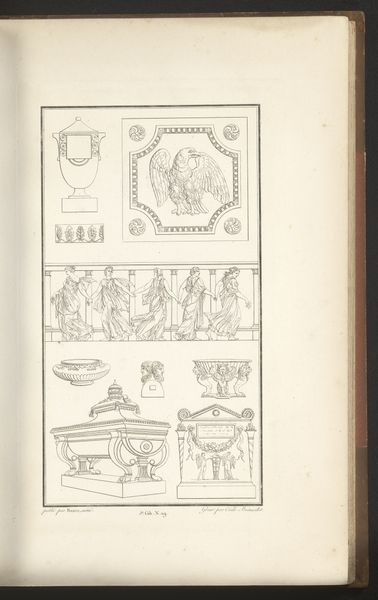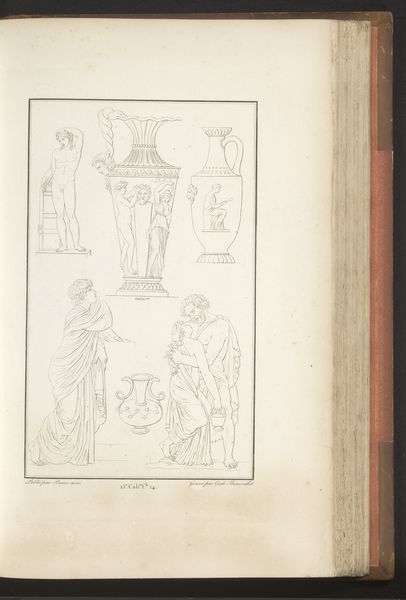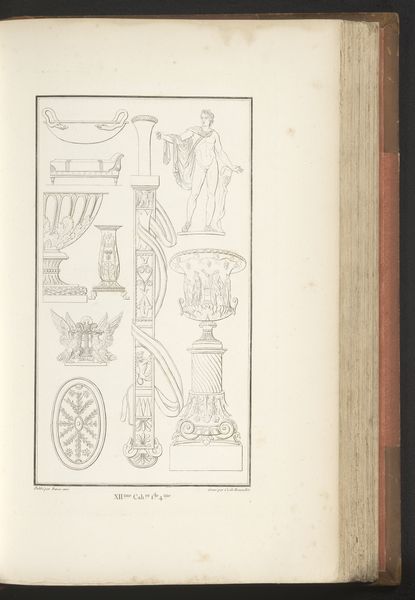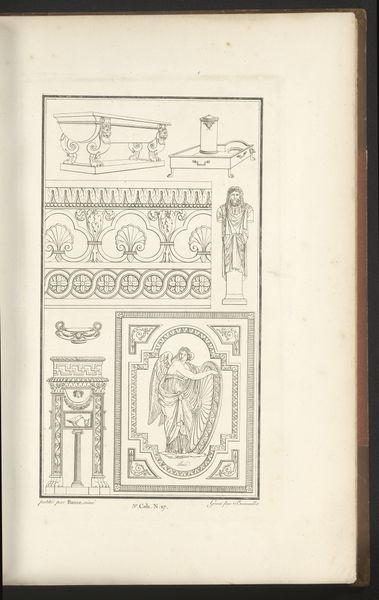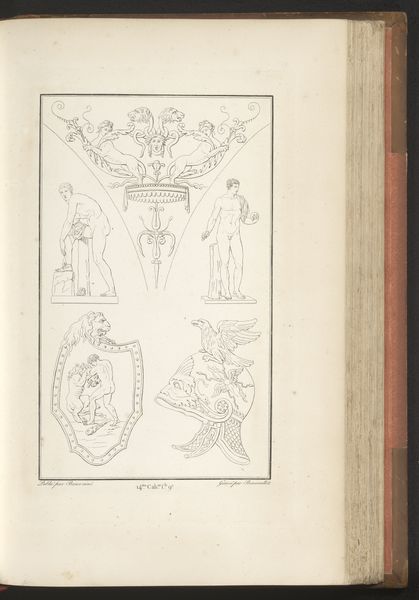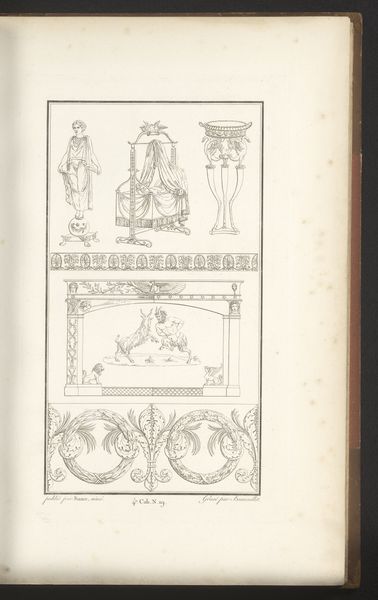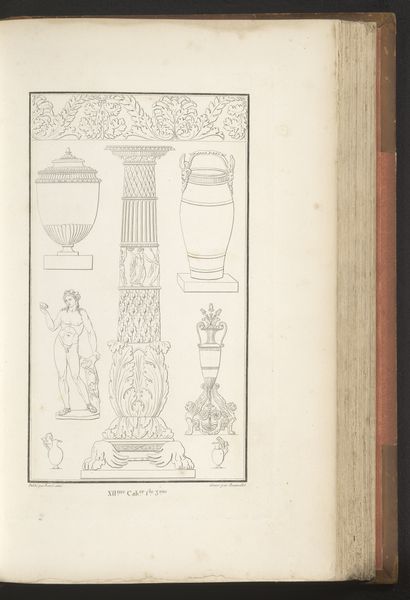
drawing, ornament, paper, ink, pencil, engraving
#
drawing
#
neoclacissism
#
ornament
#
classical-realism
#
figuration
#
paper
#
ink
#
geometric
#
classicism
#
ancient-mediterranean
#
pencil
#
history-painting
#
decorative-art
#
engraving
Dimensions: height mm, width mm
Copyright: Rijks Museum: Open Domain
Curator: Here we have a page titled "Diverse ornamenten," which translates to "Diverse Ornaments." Dating to around 1820, it's rendered with ink and pencil on paper in the style of an engraving, and showcases a variety of classical motifs. Editor: It feels like peering into an architect's sketchbook from another era. There's a quiet elegance, almost melancholic, about the precise linework. It's like capturing the essence of a lost world in these intricate details. Curator: Precisely! This kind of drawing would have been instrumental for disseminating neoclassical style and details during that period. Ornament books were a key method through which styles from the ancient world were revived and spread across Europe. The sheet echoes design practices that looked back to Roman antiquity for both inspiration and legitimacy. Notice the Grecian figures placed in tandem with various furniture, vessels, and table forms. Editor: The human figures feel a little stilted, actually—more like placeholders for ideals than actual people. Do you think this piece conveys a certain social message of its time, reflecting social hierarchies and idealized forms, or is it simply documentation of patterns? Curator: It does both! Ornament served ideological purposes as much as aesthetic ones. By embracing classical forms, the elites of the 19th century sought to legitimize their power through a connection to the perceived grandeur of previous empires. Ornament served to showcase one's education and knowledge of design vocabulary, so while patterns do represent their aesthetic appeal, this drawing ultimately conveys social messages and elitist values. Editor: That gives the piece a rather different layer of understanding to reflect on. What once seemed like a peaceful historical illustration has undertones of dominance and value projection! Thank you for this nuanced insight. Curator: My pleasure! It only reveals how art continues speaking even centuries later.
Comments
No comments
Be the first to comment and join the conversation on the ultimate creative platform.
